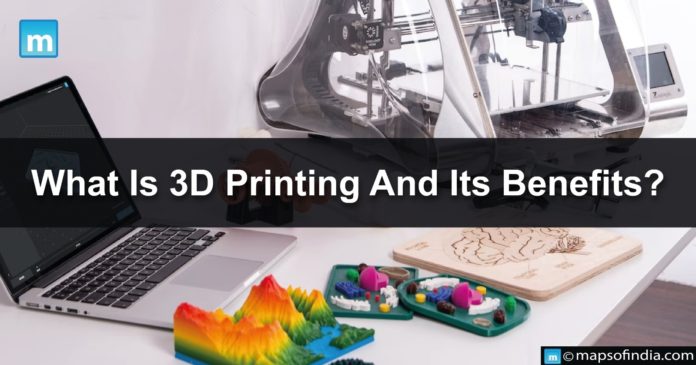The layer-by-layer building of a three-dimensional object from a computer-generated design is additive manufacturing or 3D Printing.
What is 3D Printing?
The additive manufacturing process of 3D Printing is used to create parts. It is “additive” as it fuses layers of material to create physical objects instead of using a block of material or a mould. It produces more complex geometries than traditional technologies, is quick, has low fixed setup costs, and has a growing list of materials. In the engineering field, it is widely used, especially for prototyping and developing lightweight geometries.
Addictive Manufacturing
3D Printing is a computer-controlled process that makes three-dimensional objects by depositing materials, typically in layers, under the name additive manufacturing (AM) or additive layer manufacturing (ALM), respectively.
Advantages
Compared to conventional manufacturing techniques, 3D Printing makes creating complex shapes with less material possible. These are some of the benefits of 3D Printing.
-
Affordable
This manufacturing process has only a few relatively small costs. The amount of material used, the time required to construct the part, and any necessary post-processing all impact the price of a part.
-
Customized
Since the process is based on computer-aided designs (CAD), any product modifications can be easily made without raising the cost of production.
-
Parts with Specific Properties
3D Printing is usually made with plastics, but other things are specifically created for the parts. 3D Printing is customizable when adequate material is used.
-
Working
A three-dimensional object must be built from scratch using cutting-edge software, powder-like materials, and precise tools. These are the main steps:
-
3D Modeling
3D modelling comes first in every 3D printing process. Designing in 3D modelling software is a requirement for all objects. For conventional manufacturing techniques, some designs are too complex and detailed.
-
Slicing
Engineers must divide the model into layers to produce the final object because 3D printers cannot comprehend the concept of three dimensions.
A model’s layers are scanned using slicing software, which instructs the printer how to move to recreate each layer. Also, slicers direct 3D printers where to “fill” a model.
3D Printing Process
In the process of direct 3D Printing, the printer behaves essentially the same as a conventional inkjet printer. It creates a three-dimensional object by stacking hundreds or thousands of 2D prints on top of one another.
-
Industries Using 3D Printing
Due to its wide features, 3D Printing is used in many different industries. These are some industries that find 3D an essential use.
-
Medical
The medical industry has found 3D Printing a handy mechanism for creating custom implants and devices. Additionally, 3D Printing can significantly shorten production runs and cut costs.
-
Aerospace
Due to the ability to create an item as one complete component using 3D Printing, lead times and material waste in aerospace are decreased.
-
Robotics
The robotics industry is a perfect fit for 3D Printing thanks to its quick manufacturing, flexibility in design, and ease of design customization.





